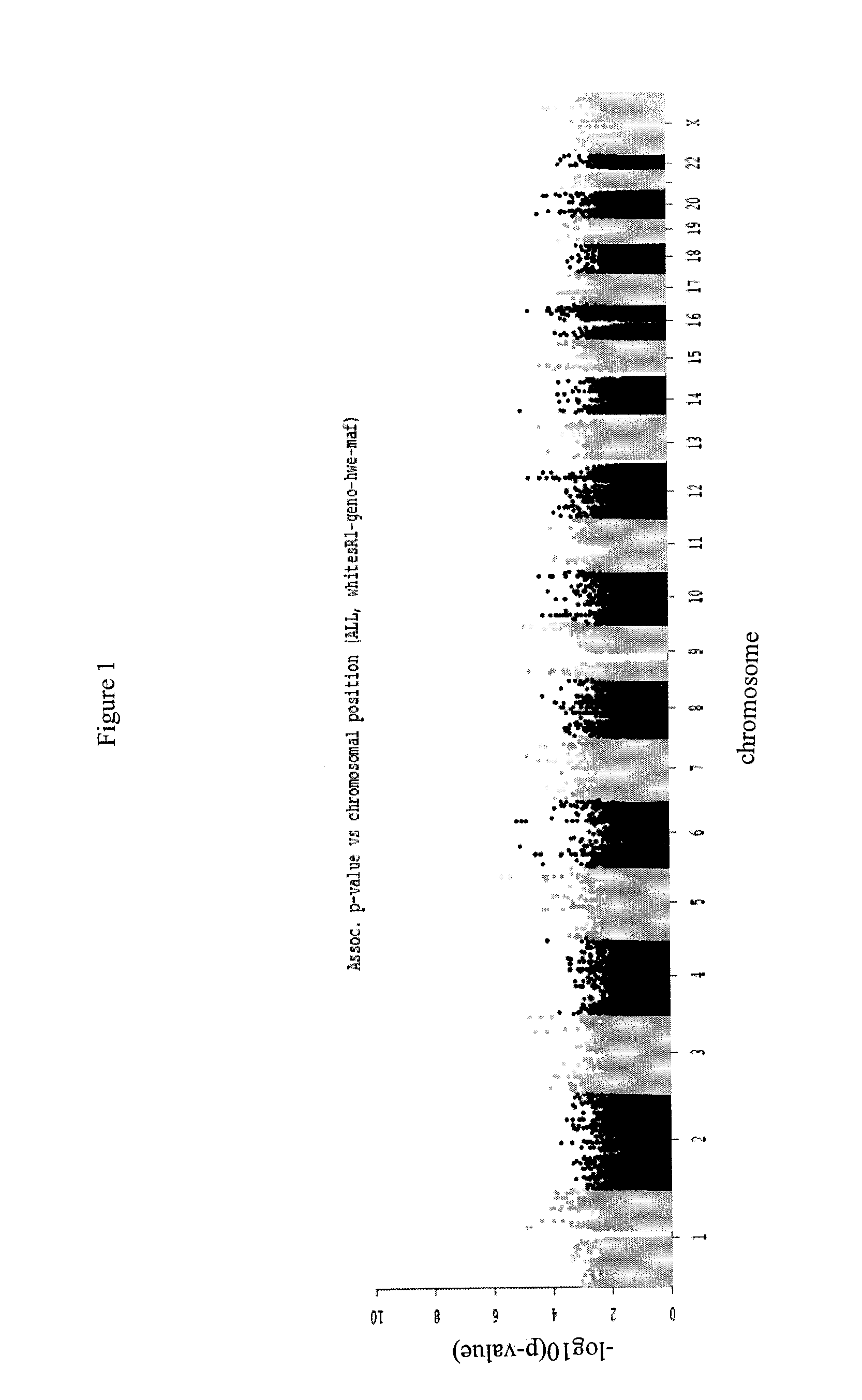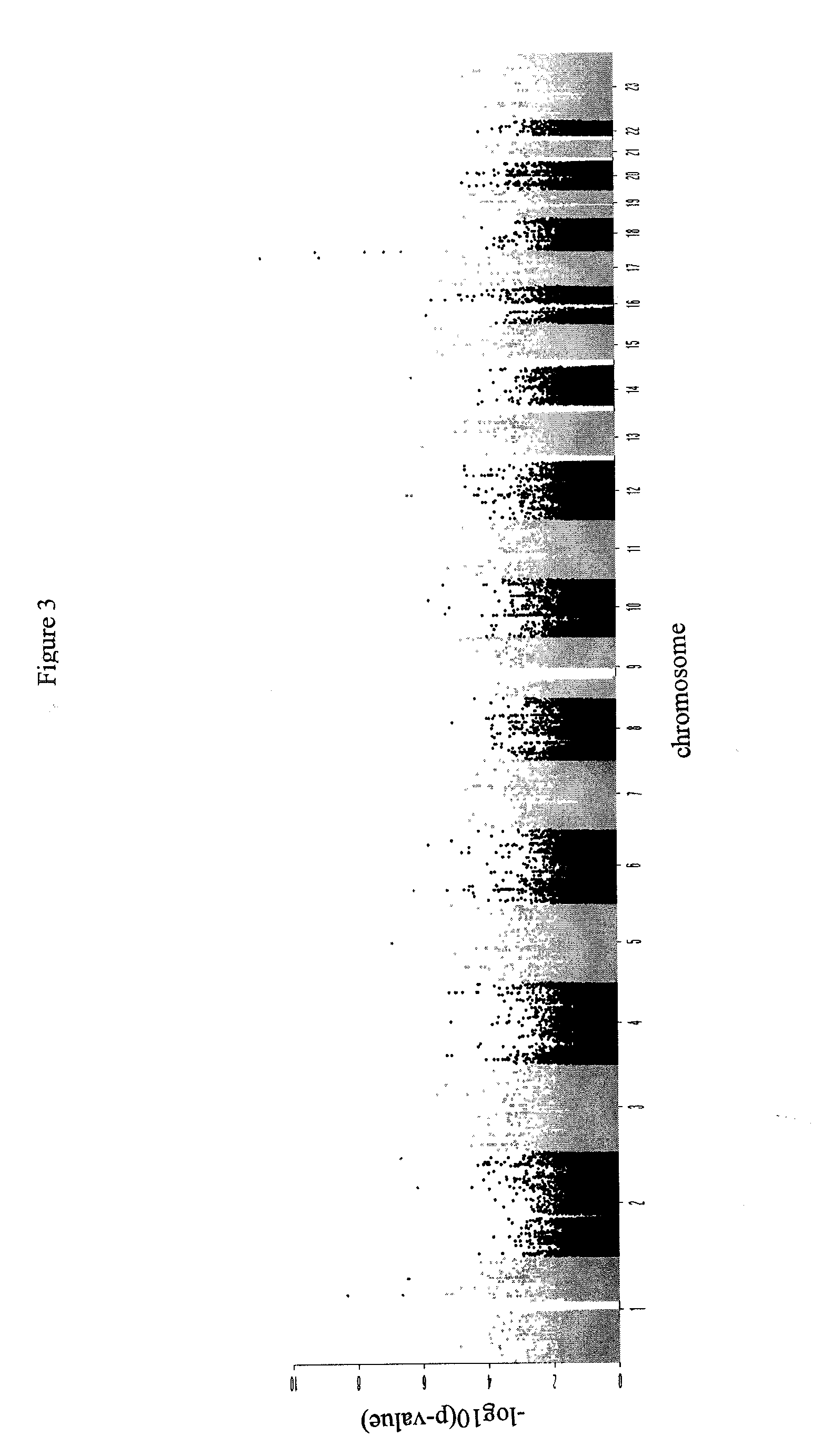Biomarkers for serious skin rash
a skin rash and biomarker technology, applied in the field of biomarkers for serious skin rash, can solve the problems of no clinically useful method for predicting, withdrawal of drugs, morbidity and death
- Summary
- Abstract
- Description
- Claims
- Application Information
AI Technical Summary
Benefits of technology
Problems solved by technology
Method used
Image
Examples
example 1
Whole-Genome Association (WGA) Study
[0098]A whole-genome association (WGA) study was undertaken in which the case group comprised 71 SSR cases that were exposed to a variety of drugs and 135 clinically matched controls, all contributed by GlaxoSmithKline (GSK). All cases and controls were genotyped using Illumina Human 1M chips. To prevent spurious association caused by population stratification, 56 Caucasian cases and 107 Caucasian controls were chosen based on Principal Component Analysis (PCA). 4 cases and 11 controls were removed from the study based on hidden relatedness and inconsistent gender. The genotypes of the remaining 52 cases and 96 controls were denoted as the R1 data set.
[0099]Illumina 1M chips include a total of 1,072,820 probes, including probes for Single-Nucleotide Polymorphisms (SNPs) and Copy Number Variations (CNVs). To ensure the quality of the analysis, all probes with Minor Allele Frequency (MAF) smaller than 0.01, missing call rate larger than 0.05, or p-v...
example 2
WGA Analysis
[0115]Using a similar data set as described in Example 1, a modified WGA analysis was performed as outlined below.
Results
[0116]This study was based on three SJS / TEN collections: PGX40001 (Pirmohamed et al., 2007) and LAM30004 (Kazeema et al., 2009), and an Italian collection. Cases from PGX40001 and Italian collections were exposed to multiple drugs (Table 6). All subjects from LAM30004 were epilepsy patients treated with lamotrigine. The controls in PGX40001 were not matched by disease, but by age, gender, and ethnicity. The controls in LAM30004 were matched to cases by drug, age, and ethnicity. In total, 96 cases and 198 controls were genotyped at one facility in two batches: PGX40001 and LAM30004 subjects were in one batch and genotyped using the Illumina 1M chip, while the Italian collection was genotyped using the Illumina 1M-duo chip. Both chips contain more than 1 million probes of SNPs or CNVs. A series of quality control steps were applied to each collection sep...
PUM
| Property | Measurement | Unit |
|---|---|---|
| flow rates | aaaaa | aaaaa |
| diameter | aaaaa | aaaaa |
| diameter | aaaaa | aaaaa |
Abstract
Description
Claims
Application Information
 Login to View More
Login to View More - R&D
- Intellectual Property
- Life Sciences
- Materials
- Tech Scout
- Unparalleled Data Quality
- Higher Quality Content
- 60% Fewer Hallucinations
Browse by: Latest US Patents, China's latest patents, Technical Efficacy Thesaurus, Application Domain, Technology Topic, Popular Technical Reports.
© 2025 PatSnap. All rights reserved.Legal|Privacy policy|Modern Slavery Act Transparency Statement|Sitemap|About US| Contact US: help@patsnap.com



